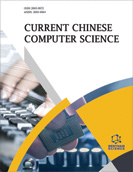Abstract
Background: Cubic Hesitant Fuzzy Set (CHFS) is a hybrid set that can express uncertain and hesitancy fuzzy information simultaneously.
Objective: In this paper, we introduced three trigonometric similarity measures (e.g., cosine, tangent, and cotangent similarity measures) to measure the degree of similarity between the alternative and the ideal set under the CHFS environment. Various desirable characteristics of the cubic hesitant fuzzy set are studied. Then, we developed multiple attribute decision-making methods based on the weighted cosine, tangent, and cotangent similarity measures of CHFSs.
Methods: In this research, we presented the similarity measures of CHFSs based on the cosine, tangent, and cotangent functions. Then, illustrative examples of construction project management with CHFS information are presented to show the effectiveness and feasibility of the proposed Multiattribute Decision-making (MADM) method under CHFS environments.
Results: Based on the weighted similarity measures between each alternative and the ideal set, this method provides the ranking order according to the values of their similarity measure. The best alternatives can be easily identified from the ranking order obtained.
Conclusion: Based on the comparison of the decision results obtained, the tangent and cotangent similarity measures are better in similarity identification than the cosine similarity measure for solving MADM problems under a cubic hesitant environment.
Keywords: Cubic Hesitant Fuzzy Set (CHFS), trigonometric similarity measure, Multiple-Attribute Decision Making (MADM), hesitancy fuzzy information, construction management, environment.
[http://dx.doi.org/10.1088/1757-899X/251/1/012048 ]
[http://dx.doi.org/10.1016/S0019-9958(65)90241-X]
[http://dx.doi.org/10.1016/0020-0255(75)90036-5]
[http://dx.doi.org/10.3233/IFS-151906]
[http://dx.doi.org/10.1615/Int.J.UncertaintyQuantification.2017020446]
[http://dx.doi.org/10.5281/zenodo.570938]
[http://dx.doi.org/10.5281/zenodo.831934]
[http://dx.doi.org/10.1002/int.20418]
[http://dx.doi.org/10.1109/FUZZY.2009.5276884]
[http://dx.doi.org/10.1007/s42524-019-0017-4]
[http://dx.doi.org/10.3233/JIFS-162013]
[http://dx.doi.org/10.1016/j.jbi.2018.10.003] [PMID: 30339927]
[http://dx.doi.org/10.3233/JIFS-182555]
[http://dx.doi.org/10.5281/zenodo.32286]
[http://dx.doi.org/10.1007/s00500-015-1818-y]
[http://dx.doi.org/10.1016/j.proeng.2017.02.111]
[http://dx.doi.org/10.1061/(ASCE)0742-597X(2003)19:2(60)]
 37
37 6
6


















